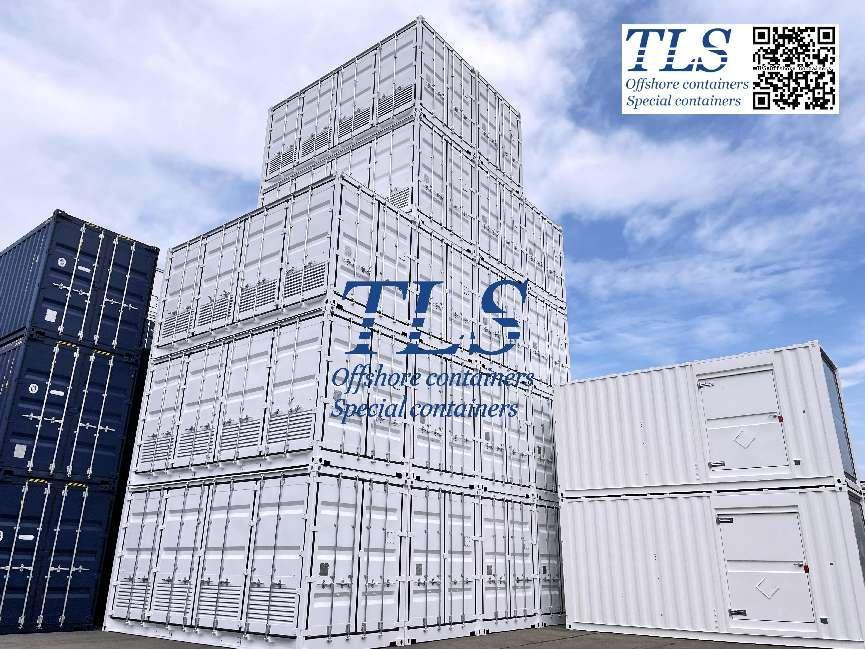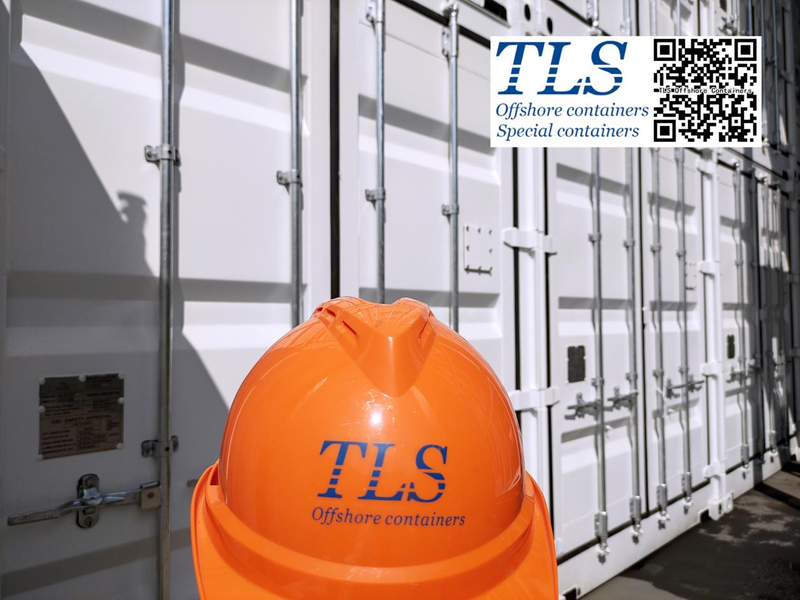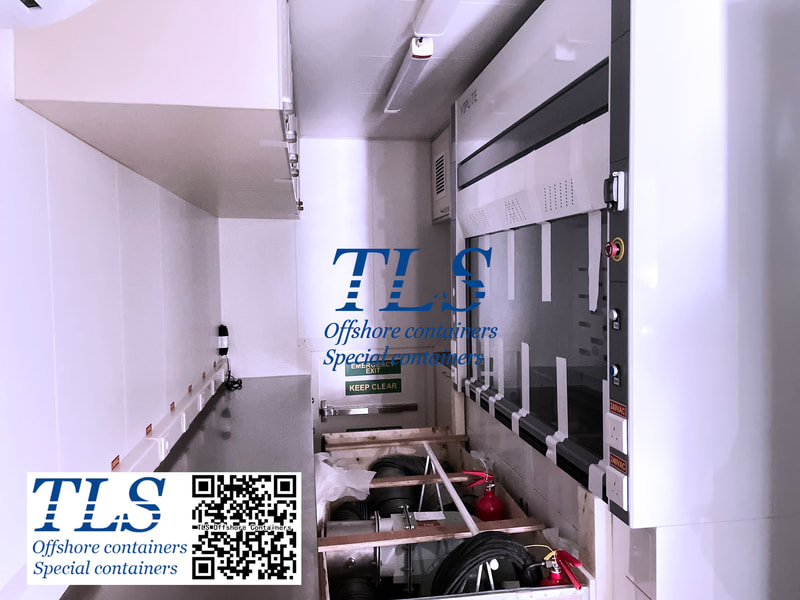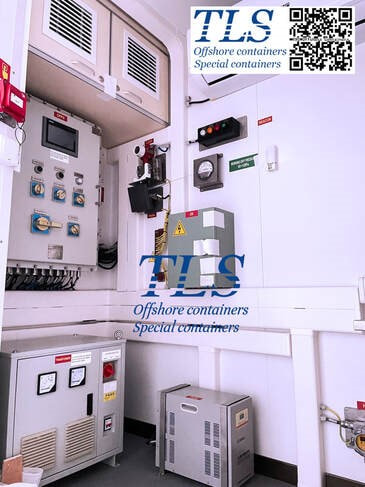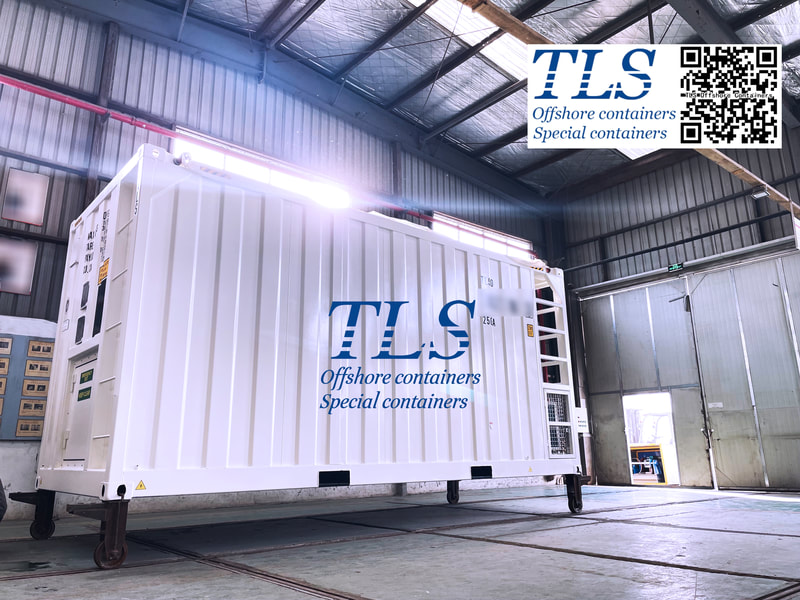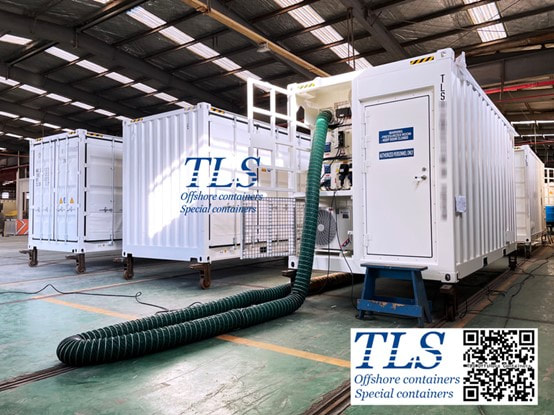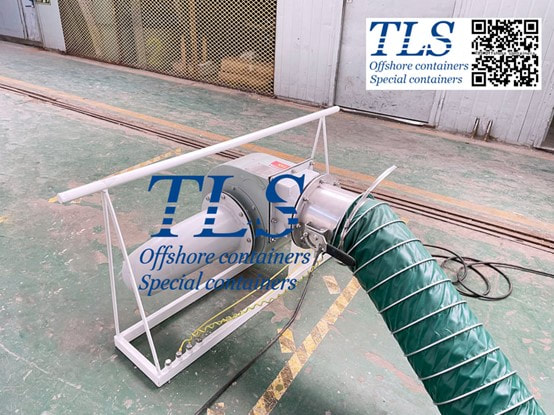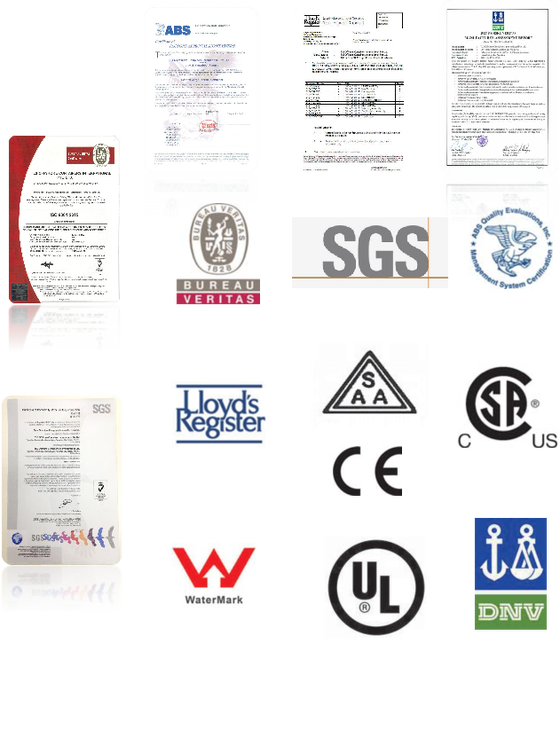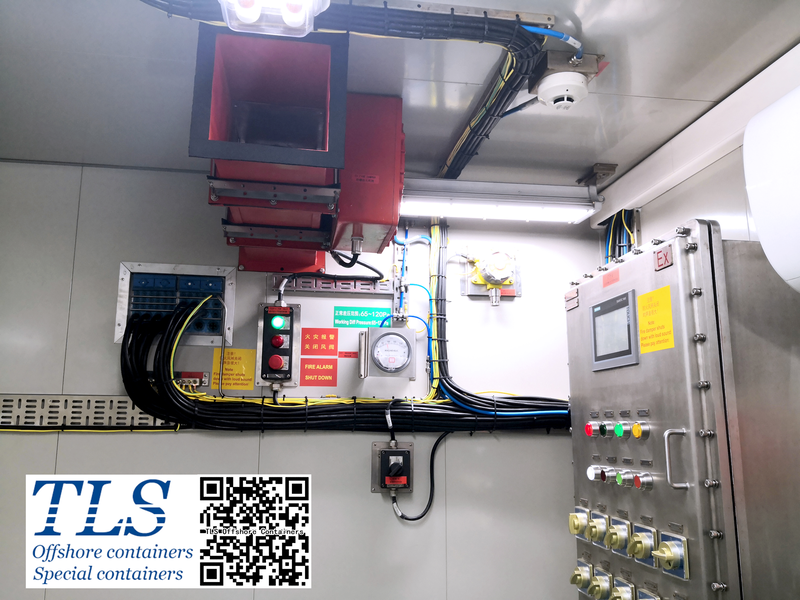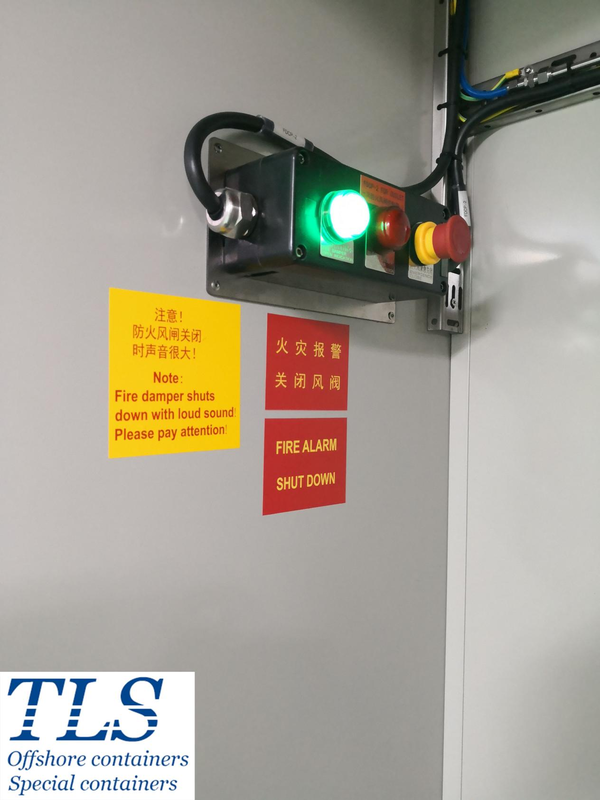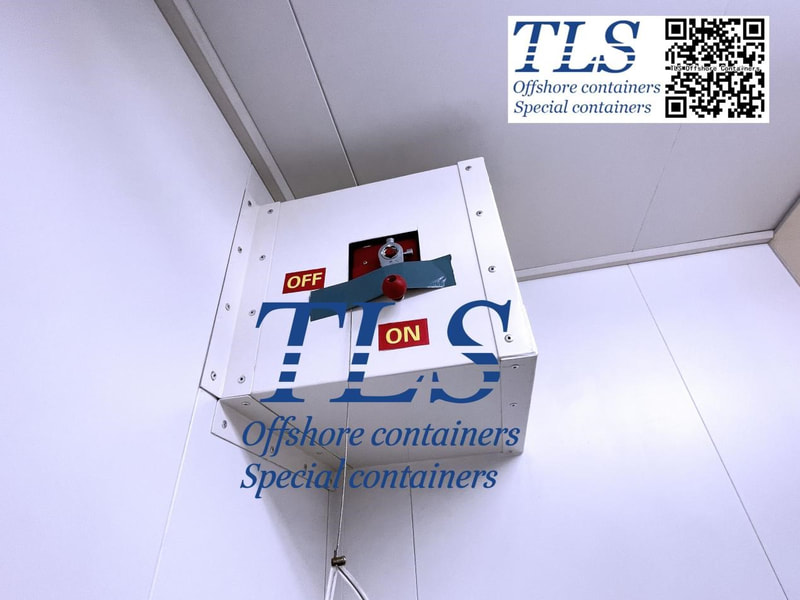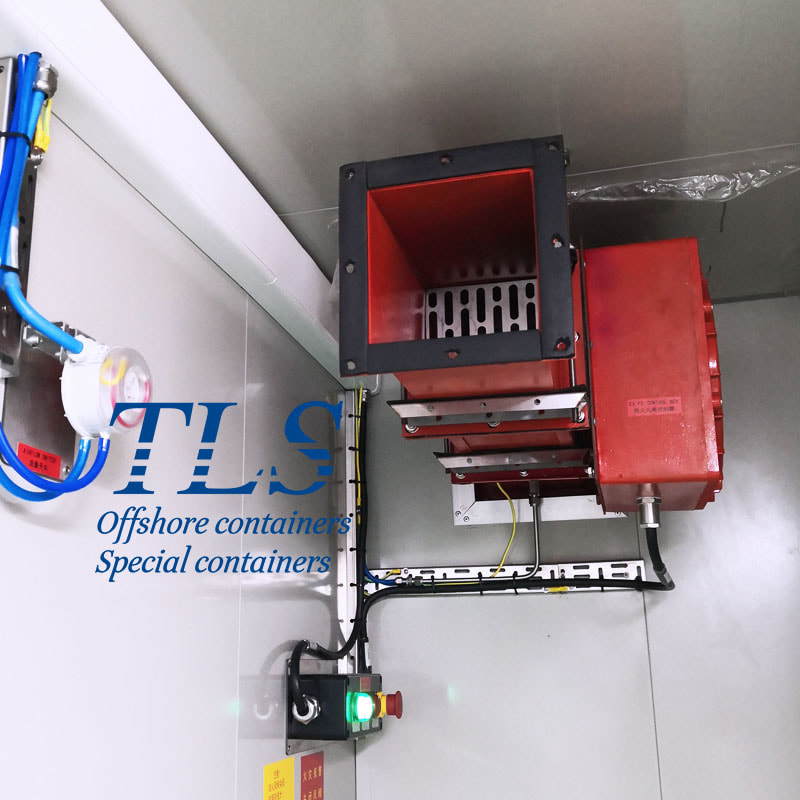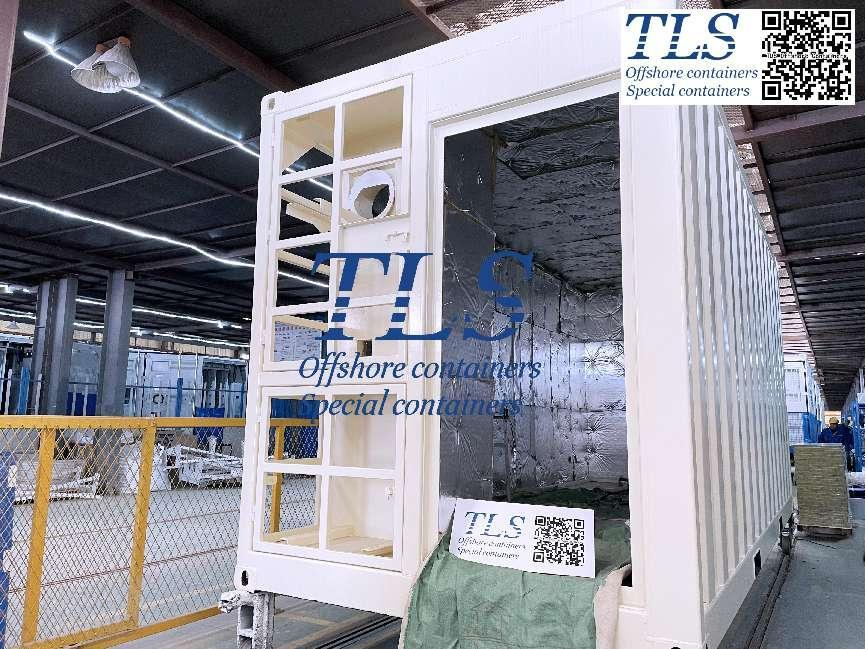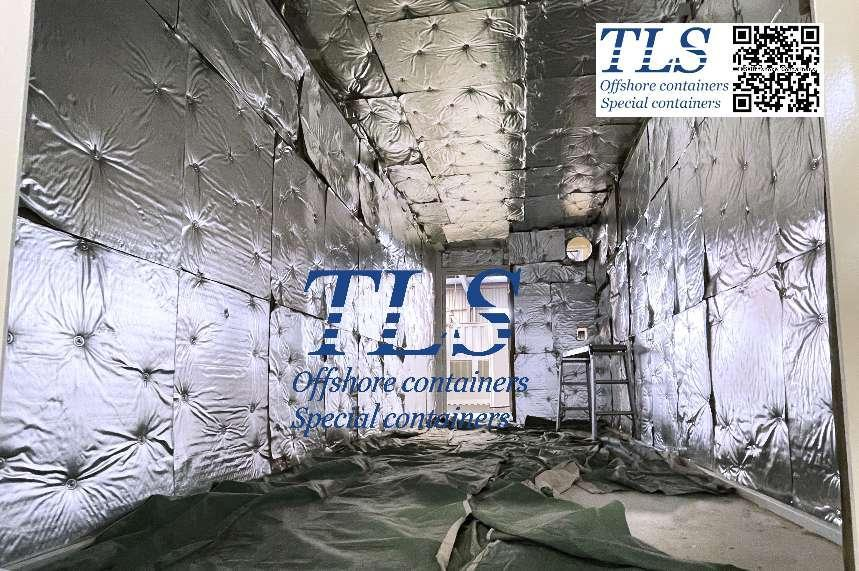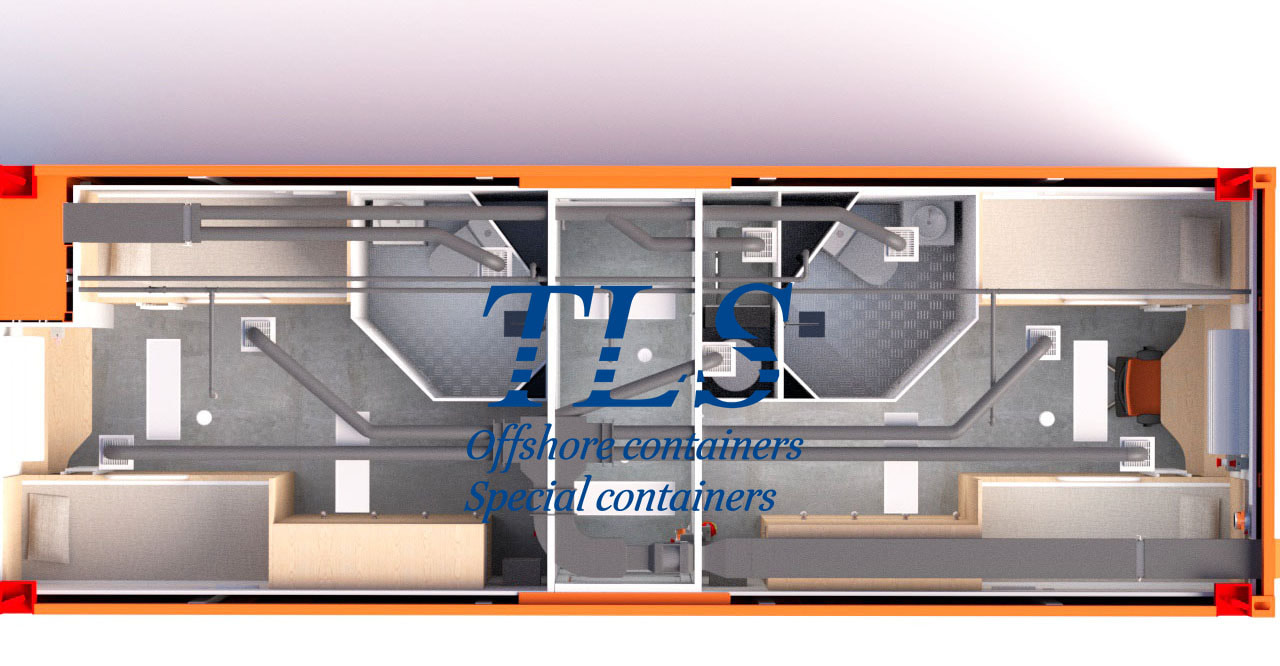|
As the demand for renewable energy continues to grow, the use of battery energy storage containers has become increasingly popular. These containers provide a reliable and efficient way to store energy and help balance the electrical grid. However, safety concerns around battery energy storage containers have also arisen, particularly regarding the risk of fire. To mitigate this risk, battery energy storage containers are equipped with a fire suppression system. This system is designed to quickly detect and suppress any potential fires that may occur within the container. In this article, we will explore the fire suppression system of the battery energy storage container and its importance for safety. Firstly, it's important to understand why a fire can occur in a battery energy storage container. Lithium-ion batteries, which are commonly used in these containers, can generate heat and potentially ignite if damaged or overheated. This can result in a thermal runaway event, where the heat generated by one battery cell can spread to adjacent cells and cause a chain reaction, leading to a fire. To prevent this from happening, battery energy storage containers are equipped with a range of safety features, including fire suppression systems. These systems are designed to detect a fire early on and suppress it before it can spread. One common type of fire suppression system used in battery energy storage containers is a water mist system. This system works by spraying a fine mist of water over the affected area, which helps to cool down the batteries and suppress the fire. Water mist systems are particularly effective at suppressing fires in lithium-ion batteries because they are non-conductive and do not damage the batteries. Another type of fire suppression system used in battery energy storage containers is a gas suppression system. This system works by releasing a gas, such as carbon dioxide or nitrogen, into the container to suppress the fire. Gas suppression systems are effective at suppressing fires because they displace oxygen, which is needed for combustion to occur. In addition to these fire suppression systems, battery energy storage containers are also equipped with a range of other safety features. These may include temperature sensors, smoke detectors, and thermal cameras, which can detect potential fire hazards and alert operators to take action. Overall, the fire suppression system is a crucial safety feature of the battery energy storage container. By detecting and suppressing fires early on, these systems can help to prevent damage to the container and ensure the safety of those nearby. As the use of battery energy storage containers continues to grow, it's important that safety remains a top priority, and that these systems are properly maintained and tested to ensure their effectiveness. TLS Offshore Containers / TLS Special Containers is a global supplier of standard and customised containerised solutions. Wherever you are in the world TLS can help you, please contact us. Regarding the Battery Energy Storage System (BESS) container, please download Energy Storage System (ESS) Containers brochure for reference. #Battery energy storage container #Fire suppression system #Lithium-ion batteries #Thermal runaway event #Gas suppression system #Electrical grid #Energy storage system (ESS) containers Written by Oliver#positive pressure, #blast-proof container, #hazardous area, #ventilation system, #ducts, # flammable gas, enclosure, alarm system,
Battery Energy Storage Systems (BESS) are complex systems that require precise monitoring to ensure they operate safely and efficiently. Sensors play a crucial role in this monitoring, providing real-time information about the system's status and environment. In a BESS container, different types of sensors are used, including door status sensors, temperature sensors, and humidity sensors. A door status sensor is an essential component of a BESS container, typically installed to monitor whether the container's door is open or closed. This sensor provides critical information about the system's security, helping to prevent unauthorized access and protect the system's components. An open door may also impact the system's thermal management, as it could allow heat to escape or let in cold air. The status of the door can be integrated into the system's control logic to trigger alarms or initiate specific responses when the door is opened or closed. Temperature sensors are another vital part of a BESS container. These sensors continuously monitor the room temperature of the system, providing data that is crucial for managing the system's performance and safety. For instance, batteries in a BESS have an optimal operating temperature range. If the temperature gets too high, the batteries could overheat, leading to damage or even thermal runaway, a dangerous situation that could result in a fire or explosion. If the temperature gets too low, the batteries' performance and lifespan could be reduced. Temperature sensors in a BESS container typically use PT100 sensors, a type of resistance temperature detector (RTD) known for its high accuracy over a wide temperature range. Humidity is another environmental factor that can significantly impact the performance and safety of a BESS. High humidity can lead to condensation, which could cause electrical short circuits or corrosion of components. On the other hand, low humidity can increase the likelihood of electrostatic discharge, which could damage sensitive electronic components. Therefore, a BESS container is typically equipped with a humidity sensor to monitor the relative humidity within the system. This sensor can measure relative humidity from 0 to 100%, providing valuable data that can be used to control the system's humidity levels and prevent these issues. The humidity sensor is often connected to a CAN open IO module, allowing it to interface with the system's Supervisory Control and Data Acquisition (SCADA) system or site controller. This connection enables real-time monitoring and control of the system's humidity levels, ensuring they stay within the safe and optimal range. In conclusion, sensors play a vital role in monitoring and controlling the environment within a BESS container. They provide the real-time data necessary to manage the system's performance and safety, helping to prevent issues that could lead to system failure or damage. Whether it's a door status sensor, a temperature sensor, or a humidity sensor, each of these components contributes to the reliable and efficient operation of a BESS. When it comes to offshore operations in hazardous environments, TLS's workshop container is a valuable tool that provides an integrated control system with PLC control, human-machine interface, and peripheral devices. Additionally, it features a positive pressure explosion-proof and fire gas control system that detects, monitors, a nd alerts for fire, flammable gas, and toxic gas. The LAB container complies with the DNV2.7-1 structural standard, IEC60079-13:2017 positive pressure explosion-proof standard, and A60 fireproof standard, ensuring safe and reliable operation. The control system is equipped with functions such as automatic control of safe power supply shutdown, emergency shutdown, and remote shutdown control. It also offers various operating modes to meet different usage needs, ensuring safe and reliable operation, convenient maintenance, and quick power supply. TLS's workshop container|laboratory container is a practical tool suitable for hazardous areas and offshore environments. It adheres to strict structural, explosion-proof, and fireproof standards, and features a range of control system functions to provide a safe and reliable user experience. #workshop container, #offshore, #hazardous environments, #integrated control system, #positive pressure explosion-proof, #fire gas control system, #DNV2.7-1, #IEC60079-13:2017, #A60 fireproof Positive pressure and negative pressure test containers are common equipment in laboratory work, designed to maintain a relatively stable pressure environment to meet the needs of experiments. To achieve this goal, these test containers usually need to be equipped with some auxiliary facilities, among which centrifugal fans are a very important part. A centrifugal fan is a commonly used type of fan that works by sucking in air and blowing it out into the target area through rotating blades. In positive pressure containers, the role of the centrifugal fan is to blow fresh air into the container to maintain a positive pressure state. This helps prevent harmful substances from entering the test container from the external environment, thus ensuring the purity and stability of the experimental environment. In contrast, in negative pressure containers, the role of the centrifugal fan is to exhaust the air inside the container to the external environment to maintain a negative pressure state. This helps prevent harmful substances from leaking from the test container into the external environment, ensuring the safety of operators and the reliability of the experiment. To maintain the pressure stability inside the positive pressure and negative pressure containers, they usually need to be equipped with some auxiliary facilities such as pressure controllers, flow meters, pressure switches, etc. These facilities can monitor pressure changes inside the container and adjust the speed and air flow of the centrifugal fan to maintain a positive or negative pressure state. In addition, positive pressure and negative pressure containers also need to be equipped with safety facilities such as sealed doors and explosion-proof devices to ensure the safety and stability of the experimental environment. In summary, centrifugal fans play a very important role in positive pressure and negative pressure containers, which can maintain a stable air pressure inside the containers, providing a reliable environment for experiments. Besides, positive pressure and negative pressure containers need to be equipped with other auxiliary facilities to ensure the safety and stability of the experimental environment. #centrifugal fan, #positive pressure, #negative pressure, #test chamber, #laboratory equipment, #pressure controllers, #explosion-proof devices. IACS stands for the International Association of Classification Societies. It is a non-governmental organization that comprises twelve classification societies from around the world. These societies work together to develop and promote standards for the design, construction, and maintenance of ships and other marine structures. Being an IACS member certified means that a classification society has been approved by IACS and is authorized to perform surveys and issue certificates for ships and other marine structures in accordance with the rules and regulations developed by IACS. This certification ensures that the classification society meets the high standards set by IACS and has the necessary expertise and resources to carry out its responsibilities in an effective and efficient manner. The current twelve members of IACS are:
The IACS member certification is important for several reasons:
TLS is a global supplier of standard and customized containerized solutions. We've got 20 years experience for special container & 10 Years experience for modular building. Our containers meet the highest offshore standard. We are certified by many well-known classification. Wherever you are in the world TLS can help you, please contact us. Written by OliverExplosion-proof offshore containers are an essential part of offshore oil and gas operations. These containers are designed to withstand harsh environmental conditions and prevent explosions from occurring, thereby ensuring the safety of personnel and equipment. One important feature of these containers is the fire suppression system, which is critical in preventing fires from spreading and causing extensive damage. Fire suppression systems in explosion-proof offshore containers are designed to quickly detect and extinguish fires. These systems typically consist of a network of fire detection sensors, which are strategically placed throughout the container. When a fire is detected, the system will trigger an alarm and release the fire suppression agent. The most commonly used fire suppression agents in explosion-proof offshore containers are foam and dry chemical. Foam fire suppression systems are effective at extinguishing fires by smothering the flames and cooling the surface of the material. Dry chemical fire suppression systems, on the other hand, work by interrupting the chemical reaction of the fire, thereby preventing it from spreading. When designing fire suppression systems for explosion-proof offshore containers, there are several factors to consider.
In conclusion, fire suppression systems are an essential part of explosion-proof offshore containers. These systems are designed to quickly detect and extinguish fires, thereby ensuring the safety of personnel and equipment. When designing these systems, it is important to consider factors such as fire detection, release systems, and environmental conditions to ensure their effectiveness. By incorporating these features, explosion-proof offshore containers can provide a safe and reliable environment for offshore oil and gas operations. Written by OliverThe Importance of Fire Dampers in Pressurized Shipping Containers: Why and How to Use Them4/19/2023
Fire is one of the greatest hazards aboard a ship, and it is essential to have measures in place to prevent its spread. Fire dampers are an important safety device that can help contain a fire and prevent it from spreading throughout a pressurized shipping container. In this blog post, we will explore the reasons why fire dampers are essential for pressurized shipping containers, and provide guidance on how to use them effectively.
Why are fire dampers important in pressurized shipping containers? Pressurized shipping containers are designed to maintain a controlled atmosphere, which can increase the risk of fire spreading rapidly. In the event of a fire, the positive pressure in the container can cause the fire to spread more quickly, making it difficult to control. Fire dampers are designed to restrict the flow of air in the ventilation systems of these containers, preventing the spread of fire and smoke. By doing so, they protect the cargo and crew members, as well as the vessel itself. How do fire dampers work in pressurized shipping containers? Fire dampers work by restricting the flow of air in the ventilation system of a pressurized container. In the event of a fire, the damper automatically closes, preventing the spread of smoke and flames through the ventilation system. This containment can buy time for the crew to respond to the fire and take appropriate action. What are the best practices for using fire dampers in pressurized shipping containers? To ensure that fire dampers work effectively, they should be properly installed, tested, and maintained. The installation of fire dampers should be carried out by trained professionals, and they should be installed in accordance with relevant regulations and guidelines. In addition to installation, regular testing and maintenance are essential to ensure that the fire dampers are working as intended. This should be carried out by trained personnel in accordance with manufacturer guidelines and relevant regulations. Crew members should also be trained on the use of fire dampers and what to do in the event of a fire. Regular drills and training sessions can help crew members become more familiar with the equipment and respond more effectively to emergencies. Conclusion Fire dampers are an essential safety device in pressurized shipping containers. By restricting the flow of air in the ventilation system, fire dampers can help contain a fire and prevent its spread. However, to ensure their effectiveness, fire dampers must be properly installed, tested, and maintained. Crew members should also be trained on their use, and regular drills and training sessions can help improve response times in the event of an emergency. By following these best practices, shipping operations can be made safer and more efficient. Offshore container shell insulation is an essential aspect of maintaining the integrity and safety of offshore operations. These containers are used to store and transport materials and equipment to and from offshore oil and gas rigs, wind farms, and other maritime facilities. In this article, we will explore the importance of offshore container shell insulation and how it can benefit offshore operators. What is offshore container shell insulation? Offshore container shell insulation refers to the process of insulating the outer shell of a container used in offshore operations. This insulation serves to protect the container and its contents from extreme temperature variations, humidity, and other environmental factors that can cause damage. The insulation material used for offshore containers is typically high-density polyurethane foam, which provides excellent insulation and protection against the elements. This material is lightweight, durable, and has excellent insulation properties, making it ideal for offshore container applications. Why is offshore container shell insulation important? Offshore container shell insulation is essential for several reasons. First and foremost, it helps protect the contents of the container from extreme temperature variations. Offshore operations often take place in harsh environments where temperatures can fluctuate drastically, and without proper insulation, the contents of the container can be damaged or destroyed. In addition to temperature protection, offshore container shell insulation also helps to protect against humidity and moisture. Offshore environments are often humid, and this can lead to corrosion and other forms of damage to the container and its contents. Insulation helps to prevent moisture from entering the container and damaging its contents. Furthermore, offshore container shell insulation also helps to reduce energy consumption. When containers are not properly insulated, they require more energy to maintain the desired temperature inside. This increased energy consumption can lead to higher costs and a greater environmental impact. By insulating offshore containers, energy consumption can be reduced, resulting in cost savings and a lower carbon footprint. Benefits of offshore container shell insulation The benefits of offshore container shell insulation are numerous. Here are some of the most significant advantages:
Conclusion: Offshore container shell insulation is a critical aspect of maintaining the integrity and safety of offshore operations. Insulating the outer shell of these containers helps protect against extreme temperature variations, humidity, and other environmental factors that can cause damage. The benefits of offshore container shell insulation include protecting the contents of the container, reducing energy consumption, enhancing the lifespan of offshore containers, improving safety, and ensuring compliance with industry regulations and standards. By investing in offshore container shell insulation, offshore operators can enjoy greater safety, efficiency, and cost savings in their operations. TLS Offshore Containers / TLS Special Containers is a global supplier of standard and customised containerised solutions. Wherever you are in the world TLS can help you, please contact us. Written by OliverOffshore container homes offer flexibility and adaptability, but designing their interior spaces requires careful consideration. To ensure a comfortable and safe living environment, designers must prioritize the following:
|
Archives
July 2024
Categories
All
|
- Home
-
Containerised solutions
- Intelligent pressurised container | MUD logging cabin
- Battery energy storage system (BESS) container
- Flexible grid tied battery storage system
- Laboratory container | workshop container | Equipment containers
- Temporary refuge shelter | Toxic gas refuge | Safe haven
- Offshore accommodation cabin | office container
- Reefer container | Refrigerated container
- Intelligent waste water treatment container
- Fresh water generator container
- Cargo Containers
- Product photos & videos
- News & Blogs
- Contact us
|
Featured products
Intelligent pressurised container Temporary refuge (TR) shelter, toxic gas refuge (TGR) Battery energy storage system (BESS) container Containerised waste water treatment plant Fresh water generator container Reefer container Laboratory container, Workshop container Accommodation container Offshore closed container |
All Rights Reserved 2020 © TLS Offshore Containers / TLS Energy
|

